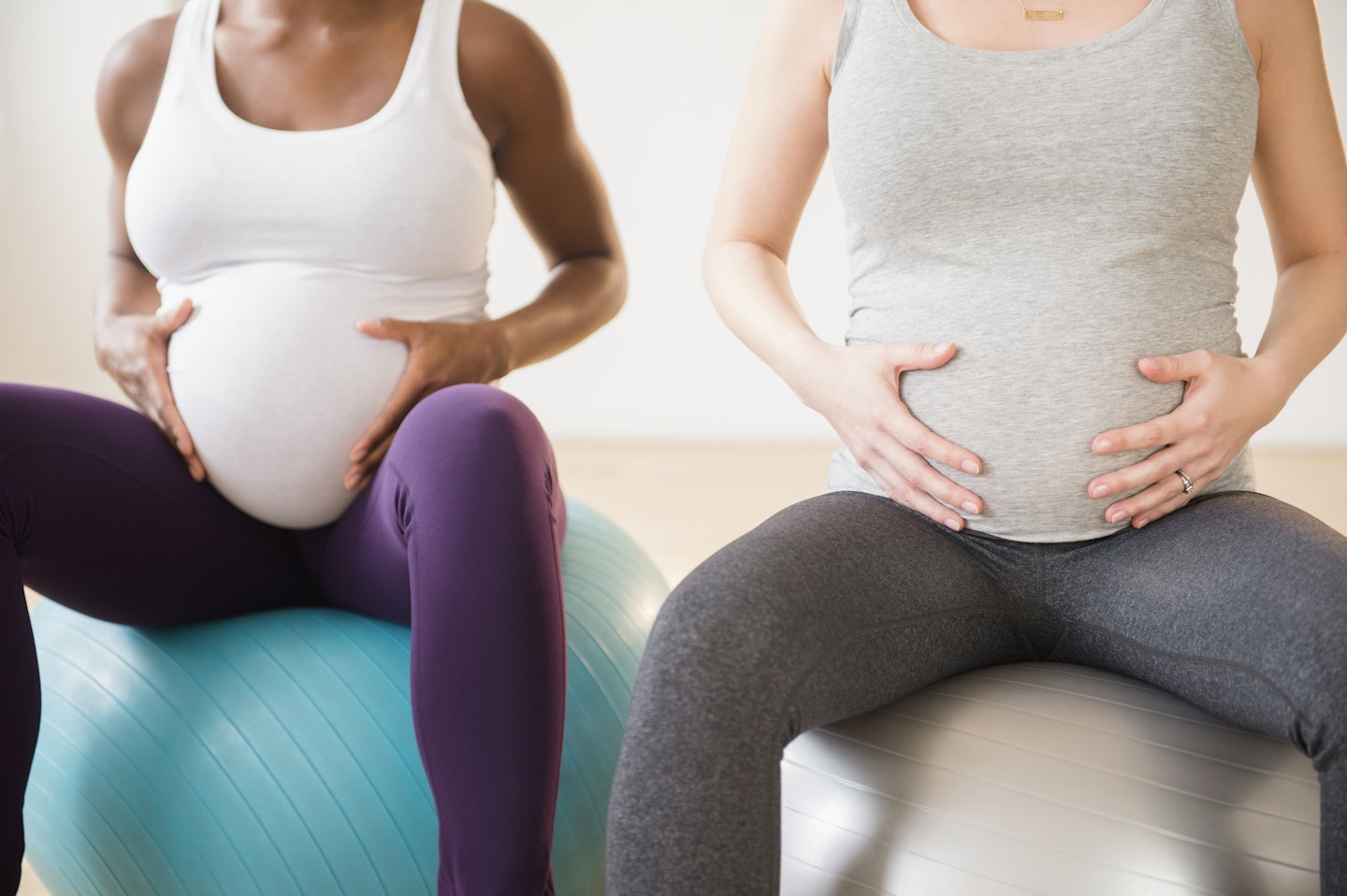In the weeks leading up to your due date, your baby will be getting into position ready to make their way into the world. The best position for your baby to be in prior to birth is head-down (cephalic presentation), with the back of their head towards the front of your tummy (anterior position). But this isn't always the case. Sometimes babies present bottom first or with the back of their head towards your back (occipito-posterior). The latter is more commonly known as "back to back".
What is a "occipito-posterior" or "back-to-back" position?
A back-to-back position is where your baby's head is down, but the back of their head and their spine is against your spine. At least one in ten babies are back-to-back when labour starts.
Most back-to-back babies are born vaginally, but this position can make labour longer and more difficult.
Back-to-back baby symptoms
If your baby is back-to-back at the beginning of labour, you might feel some of the following things:
• Backache, as your baby's skull is pushing against your spine
• Long and slow labour, with contractions stopping and starting
What happens when you're in labour with a back-to-back baby?
Most back-to-back babies turn to the anterior position during labour. While you're giving birth, the majority of back-to-back babies turn almost 180 degrees when they reach your pelvis.
This can take time, or your baby might decide they don't want to turn around after all, which means they'll come out face-up. You might also need an episiotomy or an assisted birth with forceps or ventouse to help them out. If none of this works, you may possibly need a caesarean section.
Why are some babies back-to-back?
Your baby might be back to back because of the size and shape of your pelvis. If you have a narrow and oval-shaped (anthropoid) pelvis, or a wide and heart-shaped (android) pelvis, your baby is more likely to settle in a back-to-back position.
There is also some evidence to suggest that the way you sit and move during late pregnancy can cause your baby to settle in a back-to-back position. When you're sat down for long periods of time, your pelvis is tipped backwards, which can cause the back of your baby's head (the heaviest part) to swing round to the back due to gravity and they'll end up lying against your spine.
How do you help your baby get into the anterior position?
Some experts think that you can help your baby get out of back-to-back position by adopting certain movements before and during labour. This is known as optimal fetal positioning (OFP). There isn't a whole host of scientific evidence that this will work, but many midwives think it's worth a try and for some women, it works well.
If you'd like to try some OFP techniques, you can have a go at the below positions:
• Adopt a hands-and-knees position for 10 minutes, twice a day.
• Tilt your pelvis forward, rather than back, when you're sitting. Ensure your knees are always lower than your hips.
• Check that your favourite seat or car seat doesn't make your bottom go down and your knees come up. If it does, sit on a cushion to lift up your bottom.
• Move around if your job involves a lot of sitting, and take regular breaks.
• Watch TV leaning forward over a birth ball, or sitting on the ball. If you are sitting, make sure that your hips are higher than your knees.
Other tips from NCT include:
• Sit on a wedge cushion in the car, so your pelvis is tilted forwards
• Use yoga positions, like sitting with your back upright and the soles of the feet together, knees out to the sides
• Sleep on your side, not on your back
• Use yoga positions, like sitting with your back upright and the soles of the feet together, knees out to the sides
• Avoid: deep squats, crossing your legs, sitting with feet raised, leaning back into a sofa or armchair
Try getting used to these positions all the way through your pregnancy, so you'll be well practised for when labour starts.
Lifestyle and parenting blogger Eilidh Wells talks about her experiences having a back-to-back birth with her son Oliver. She hadn't been told that her baby was back-to-back until she was in labour, and she said it helped her to understand where the pain was coming from.
"It was so so painful, but because he was back-to-back I remember thinking this pain feels like somebody is hitting the bottom of my spine with a hammer," she says.
"At one point the pain changed, I still don't know what happened at this point and me and Andy [her partner] thought that maybe he'd turned...and it happened really suddenly," she also says.
How can I improve the chances of anterior position during labour?
You can use the above tips to help turn your baby, although there is little evidence to support the success of the movements, it might help relieve back pain caused by your baby being back-to-back.
You should also try to move around as much as possible, finding the most comfortable position for you. You might find that being on all fours helps, as this means your baby drops away from your spine, alleviating backache.
You could also try knees-to-chest positions, on your knees with your head, shoulders and upper chest on the floor or mattress and your bottom in the air.
Lean forwards during your contractions by using a birth ball, beanbag, your partner, or the bed.
Rocking your pelvis during contractions can help your baby turn as they pass through the pelvis. Using a birthing ball is great for pelvic rocking.
Adopting lunge positions, either when standing on one foot, kneeling on one knee, or when you're lying on the bed can help give the baby more room to turn.
Walk or move every now and again. Don't stay sitting in a chair, or on a bed in a leaning-back position, for too long.
Try not to have an epidural or strong labour pain relief too early on in labour if you can, as epidurals may increase the chance of your baby being in a posterior position at birth. Epidurals also increase the likelihood of you having an assisted birth.

My baby's not back to back, but I've got an anterior placenta, should I be worried?
It shouldn't be a worry if your placenta is in the anterior position, it will still nourish your baby, but you might not be able to feel your baby kick as much as you would if your placenta was in a different position.
This is because the placenta provides a cushion between your baby and your stomach. This might also make it more difficult for you to hear your baby's heartbeat.
There can be potential complications with an anterior placenta, although it's not normally a cause for concern. Sometimes if you have an anterior placenta, your placenta can grow down instead of up, towards your cervix.
This could possibly block baby’s way on delivery day and cause bleeding. This condition is known as placenta previa. If the placenta blocks all or a portion of your cervix during labour, a cesarean delivery, commonly known as a C-section, is required.
